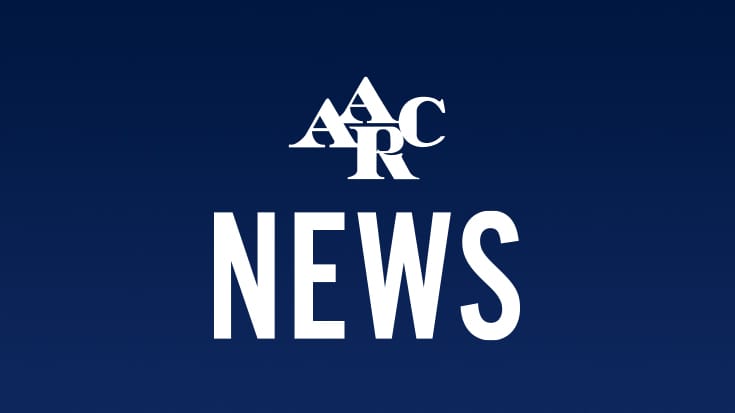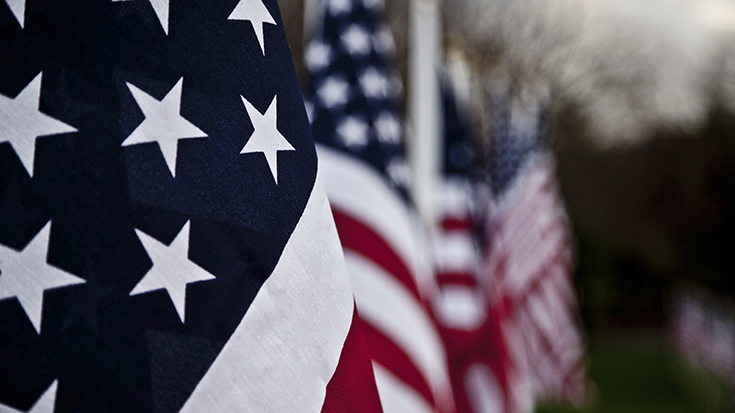
When President Woodrow Wilson marked the very first “Armistice Day” on Nov. 11, 1919, it was to honor those who had died serving their country in World War I.
Today we know Nov. 11 as Veterans Day – a day set aside each year to honor everyone who has ever worn the uniform.
The AARC is full of military veterans, and these men and women have unique perspectives on life that we can all take to heart. As we all get ready to celebrate Veterans Day 2018, we thought now would be a great time to share some of those insights.
Semper Fi
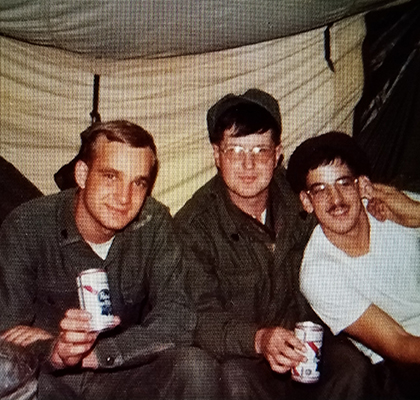
A proud veteran of the U.S. Marines, Steve Sittig, RRT, RRT-NPS, FAARC, attended boot camp in San Diego before completing his aviation/cipher electronics repair course in 29 Palms, CA. He was assigned to the 1st Marine Airwing in Okinawa, Japan then deployed to the Philippines and South Korea, where he trained other Marine units.
He subsequently deployed on training missions with the Japanese Self Defense Force at the base of Mt. Fuji before finishing out his tour of duty at Camp Lejeune in Jacksonville, NC.
Sittig says his military service taught him many lessons that he still applies to his life and his work today.
“Leadership and commitment are likely the top factors,” he said, noting he was able to achieve the rank of sergeant in under 18 months. “I was proud to serve in any institution with a history of excellence. It is one of the reasons I wanted to work at the Mayo Clinic, with their reputation for excellence.”
His service also drove his desire to volunteer for the AARC, where he’s moved up the leadership ranks to serve as chair of the Neonatal-Pediatrics Specialty Section.
“I used this military motivation to fulfill multiple roles in the AARC as well as in the Minnesota Society for Respiratory Care,” Sittig said.
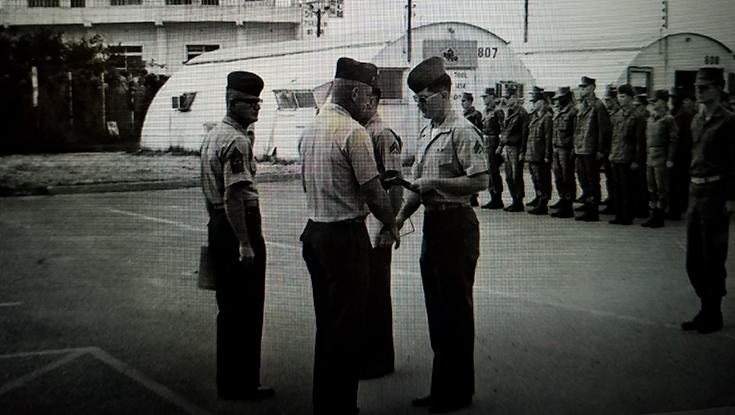
Serving his state
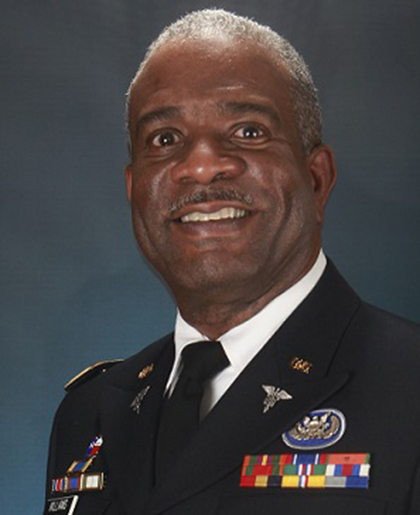
Wadie Williams, Jr., MS, RRT, joined the Texas State Guard, which is part of the Texas Military Forces, back in 2006 and he remains active today, assigned to the Texas Medical Brigade.
“As a Texas State Guardsman, our service is generally within the state borders,” explains Williams. “I have served in various missions and capacities over much of the state, whether it’s humanitarian missions for health, disease, etc., or operating and staffing a shelter for those that are left without one due to some disaster or emergent situation.”
Williams says his service has taught him that when people need help, nothing else matters – not race, not gender, not social status.
“Helping and protecting others has shown me how to appreciate what I have, especially the things we take for granted — freedom, health, family, friends, support, etc.,” he said. “Disease and disaster are great equalizers, and but for the grace of God, any of us could be one of their victims. I wanted to make a profound difference, and this allows me to do that.”
Army educated RT
An Army educated respiratory therapist, Tony Garberg, RRT, first served in the U.S. Coast Guard as a flight mechanic and EMT. He was a U.S. Army combat medic before training in RT and spent most of his time in the service in Port Angeles, WA, although he also served in Elizabeth City, NC, and San Antonio, TX.
Garberg says the most important lesson he learned in the military was to pay attention to detail.
“Whatever can change will, and usually at the most inopportune moment,” he said. “This is a great life lesson and was instilled into me early on in my military career and has had a huge impact on my life. I don’t know if there is a better career or life lesson that I could have learned at that time in my life.”
He believes military service fostered his leadership capabilities and gave him a level of responsibility he would not otherwise have had the opportunity to experience.
“They pushed me mentally and physically, which allowed me to grow in ways I never imagined I would,” Garberg said.
Many deployments
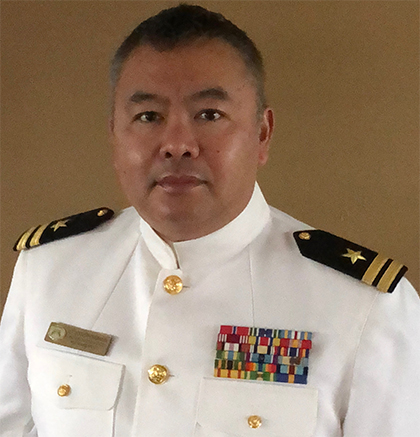
For Joseph Buhain, EdD, RRT, FAARC, military service started in 1990 and has persisted to this day. He began by enrolling in the U.S. Army National Guard in Florida and was deployed for both Hurricanes Hugo and Andrew.
In 2003 he was called up to serve as a respiratory therapist in Baghdad during Operation Iraqi Freedom and in 2005 served in Operation Enduring Freedom in Afghanistan as a combat medic. He transferred to the Special Operations Unit in 2007 and in 2010 was commissioned by the U.S. Navy as a campus liaison officer.
Buhain says military service has made him a more thorough clinician.
“Everything has a rule and a place in your medical equipment,” he said. “You must know where all your supplies are at with your eyes closed and know how to use them in explicit time.”
Military clinicians are taught to know their jobs and know them well, he continues, from the smallest piece of equipment to the most complex, and they are also taught that every soldier matters.
“We must all work as a team,” Buhain said.
He believes the civilian world underuses military veterans and would like to see that change. Their knowledge of mass casualty situations, disaster response, chemical warfare, and treatment associated with extensive casualties can play a vital role in health care.
“I feel most civilians are unaware that veterans have this expertise,” he said.
Marking the occasion
How do these AARC military members celebrate Veterans Day?
Sittig says he always takes some time to reflect on the veterans in his hometown who served as role models for him in his own military service. He also thinks about those who served with him in various capacities.
He has especially fond memories of the special recognition given to active duty service members and veterans during the AARC Congress.
“One year in Tampa the flag ceremony was filled with RT veterans,” Sittig said. “I carried the Marine flag.”
For Williams, Veterans Day means the chance to do something nice for a fellow veteran. His hospital hosts an annual Veterans Day Ceremony and he participates in that whenever he can. He also makes a deliberate effort to find a veteran and pay for their lunch, give them a gift certificate, or buy them food or even new socks and underwear, if that’s what they need most at the moment.
“It’s my chance to give back directly to them for the privilege they gave me to wear the uniform and serve today,” he said.
While Garberg says he doesn’t do anything special on Veterans Day, he greatly appreciates the sacrifices made by those who serve.
“I didn’t come from a long line of veterans,” he said. “I am the only one in my immediate family who has served; that being said I do have a great sense of pride in our great nation.”
When he sees other people recognizing the work done by military service men and women, he says: “it makes me proud to be an American, and even more proud to be a veteran.”
Buhain says he takes advantage of Veterans Day to educate young people about the value of military service.
“The most valuable lesson a young child or teen can ever know is what it was like to be a veteran in the military,” he said. “It is important that we as a society never forget about the challenges and commitment these men and women made.”
As an immigrant who was born in the Philippines, he says freedom is more than just another word to him and his family. His dad came to this country, enlisted in the U.S. Navy, and served for more than 40 years, and he felt compelled to follow in those footsteps.
“Every time Veterans Day, Memorial Day, or Military Day occurs, it reminds me of what freedom means,” Buhain said.
AARC community for veterans
At AARConnect we have a community for active military, veterans, and supporters. Check out the community!
Email newsroom@aarc.org with questions or comments, we’d love to hear from you.










